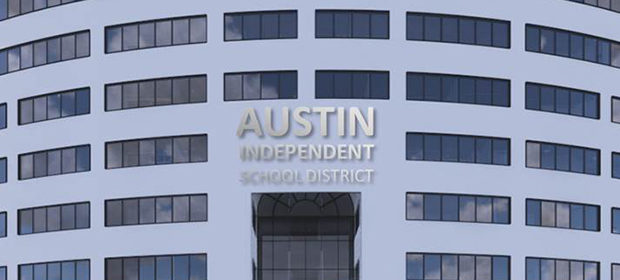AISD sets lowest tax rate in 20 years, prepares for challenges ahead
Tuesday, September 28, 2021 by
Kali Bramble Austin Independent School District’s Board of Trustees ended this week’s voting meeting on a bold note, adopting the lowest property tax rate the district has seen in 20 years.
In the 2022 fiscal year, taxpayers will pay $1.0617 per $100 in property value toward AISD’s budget, a reduction from last year’s rate by 4 cents. While the rate has technically decreased, the district will still yield an increase in tax revenue thanks to Austin’s skyrocketing housing market.
“As we all know, Texas has been a hot housing market, and in Travis County our home values have been increasing exponentially,” CFO Eduardo Ramos said in a recent information session. “Even though we have lowered our tax rate by 4 cents, the taxes on an average home will increase by about $275. If we had left the tax rate alone, taxes would have increased an estimated $470.”
For AISD, this translates to a 2 percent net increase in tax dollars compared to last year. However, it does not guarantee the district will be able to use this money to balance its budget, which is dipping into reserve funds for the second year in a row. As a property-rich school district, AISD must return a sizable percentage of its tax yield to the state for redistribution among Texas’ poorer districts.
In 2021, AISD paid nearly half of its tax yield to the state, forking over a sum of $710 million that makes it the state’s single largest source of income. This “recapture amount” is dependent on revenue from the maintenance and operations tax rate, which in turn is constrained by a maximum compressed tax rate issued to the district by the Texas Education Agency.
This is all to say that there were many constraints leading up to the vote last Thursday, when the board unanimously adopted a maintenance and operations tax rate of $0.9487 per $100 and an interest and sinking fund tax rate of 0.1130 per $100. These figures, separate from the district’s internal finances, make up the total tax rate of $1.0617 per $100. The decrease came directly from the Texas Education Agency, which issued a maximum compressed tax rate 4 cents lower than last year’s.
With the budget and tax rates finalized, the board of trustees is focusing its attention on its next challenge: student enrollment. If it meets its enrollment goal of 77,351 students by late October, the district expects to retain sufficient local revenue to meet its budgeted needs. However, because the recapture formula depends on the number of students, undershooting this target could result in an even higher sum owed back to the state of Texas.
If the enrollment target is met, $12.6 million in AISD’s property tax revenue will go toward compensation-related increases for teachers and staff, including $1,000 bonuses and an increase in salary of about 2 percent. Other investments include a planned $1.5 million toward expanding school bus services and $2 million toward new Covid-19 protection strategies.
With enrollment currently sitting at around 74,000 students, Superintendent Stephanie Elizalde acknowledges that meeting this target will be a challenge. “Historically, we haven’t seen an increase of 3,000 students between early September and the last week of October,” she said in the information session preceding the board’s voting meeting. With this in mind, the board of trustees will have to prepare for hard decisions about where to make cuts.
The next challenge for AISD’s finance department will be developing next year’s budget, which has already begun weighing on trustees. The obstacles presented by the pandemic have been tough on the district’s finances, forcing AISD to withdraw funds from its reserves – read: savings – for the second year in a row.
While the district has not yet exhausted these funds, it sits on the precipice of extending past its minimum fund balance, a measurement of financial security amounting to its ratio of savings to operational costs. Maintaining this 20 percent minimum is nonnegotiable for the district, whose infrastructure of bond funds depends on this financial security rating. “In 2022-2023, we cannot come in with a deficit budget for a third time,” Elizalde said.
“We have been lucky to have the reserves we have,” Board President Geronimo Rodriguez Jr. said, “but the winter storm and Covid pandemic have been incredible hardships for our district … and a balanced budget is something we’ll have to begin talking about.”
The Austin Monitor’s work is made possible by donations from the community. Though our reporting covers donors from time to time, we are careful to keep business and editorial efforts separate while maintaining transparency. A complete list of donors is available here, and our code of ethics is explained here.
You're a community leader
And we’re honored you look to us for serious, in-depth news. You know a strong community needs local and dedicated watchdog reporting. We’re here for you and that won’t change. Now will you take the powerful next step and support our nonprofit news organization?


